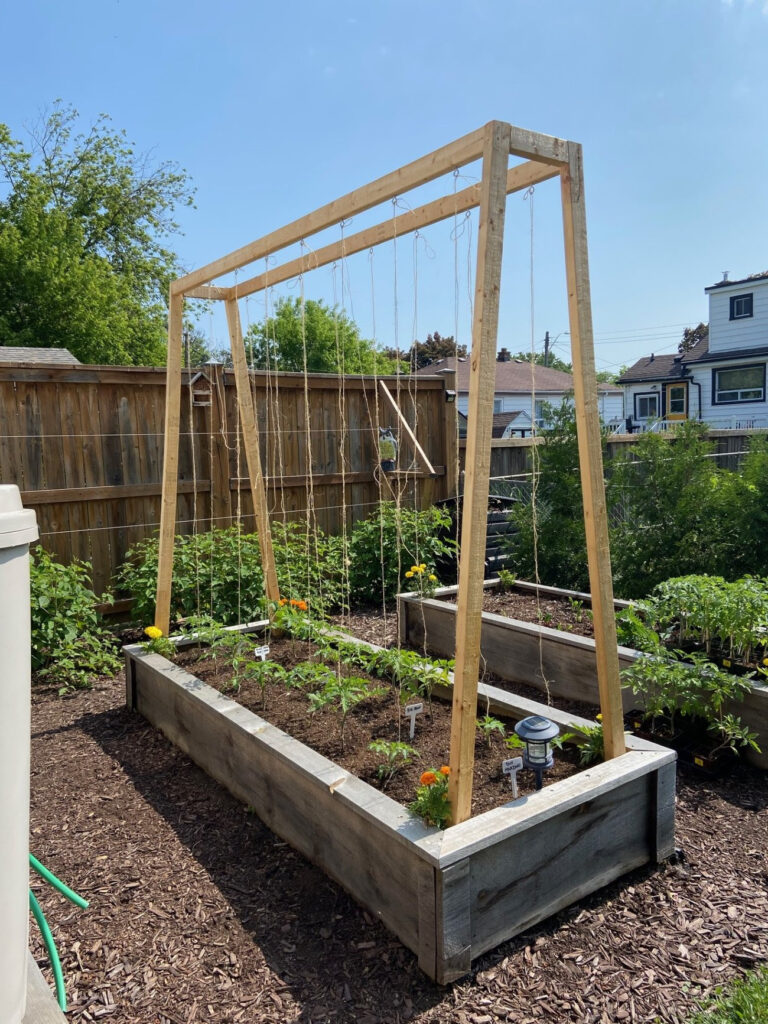Our Garden Plan
Failing to plan, is planning to fail! This is Our Garden Plan.
Planning is crucial when it comes to growing vegetables and maintaining a garden. Without a solid plan in place, we would find ourselves scrambling and facing various challenges. We experienced firsthand the consequences of not having vegetables ready to plant after our initial harvest, dealing with vegetables bolting due to neglecting maintenance, and falling short of our productivity goals.
To ensure a smooth and stress-free gardening experience, we believe in keeping things simple with the K.I.S.S. (keep it simple, stupid) approach. We’ve learned that complex plans may seem enticing on paper, but they often fail to translate effectively in the garden. So, we stick to a simplified process that minimizes stress and maximizes success.
Before we delve into our garden plan for this year, let’s provide some background information. Our gardening setup includes four raised beds, two railing planters, four clay pots, and eight plastic pots. We have identified two sunny spots in our backyard that receive a minimum of six hours of sunlight per day. Additionally, we have three rain barrels set up to collect water from our house and garage

Starting with our first raised bed, we have dedicated it entirely to growing tomatoes using a trellis and twine system. With enough space to accommodate 16 tomato plants, we plan to train them to grow as single leaders up the twine, reaching a height of approximately 7 feet. To maximize the bed’s potential, we’ll also incorporate companion plants like basil and marigolds in the corners, ensuring a beneficial growing environment for all.
Moving on to the adjacent bed, we have allocated space for zucchini, Swiss chard, kale, celery and thyme. These vegetables offer continuous harvest opportunities as we selectively cut leaves, allowing the plants to regenerate and sustain themselves throughout the growing season.
Our third bed was planted with 125 cloves of garlic last fall. Garlic typically requires around 150 days to mature, and we anticipate harvesting it in July. However, before the main harvest, we can enjoy garlic scapes—curly and stiff greens—which can be harvested earlier and used to make delicious pesto! Once the garlic is harvested, we plan to utilize the back of the bed for flowers, lettuce, and a cluster various herbs, allowing us to grow an abundance of flavorful herbs to be preserved through freezing or drying for year-round use.
Lastly, we have designated a bed specifically for lettuces and carrots. Lettuces, like other greens, can be continuously harvested and regrow, providing a steady supply throughout the season. However, due to our region’s hot summers, lettuces tend to struggle, and their quality diminishes. Therefore, we intend to replace the lettuces with more lettuces (young plants love the warmth to start) once the weather becomes excessively warm.
By carefully planning and organizing our garden beds, considering crop rotations, companion planting, and the specific needs of each vegetable, we aim to maximize productivity and ensure a thriving harvest.

5 Key Takeaways
1. Understand your space and resources: Assess the available space in your garden, considering factors such as sunlight exposure, soil quality, and water sources. Determine the resources you have at your disposal, such as raised beds, pots, or trellises. This understanding will help you make informed decisions regarding the types and quantities of vegetables you can grow.
2. Know your preferences and limitations: Consider your family’s dietary preferences and the vegetables you enjoy eating the most. This will ensure that you prioritize growing the crops that will be most rewarding for you. Additionally, be aware of any limitations or challenges you may face, such as specific climate conditions or pest issues, and choose varieties that are well-suited to your region.
3. Soil health and companion planting: Firstly, regularly adding 1-2 inches of compost to your bed enriches the soil with nutrients, promoting healthy plant growth and bountiful harvests. Only rotate your crops each year if they didn’t do well in that location. Additionally, practice companion planting by pairing compatible plants together, such as planting herbs near vegetables to deter pests or interplanting nitrogen-fixing plants to improve soil fertility.
4. Consider the season and succession planting: Take into account the length of your growing season and plan accordingly. Start with cool-season crops in early spring and transition to warm-season crops as the weather warms up. Implement succession planting, which involves sowing seeds or planting new crops at regular intervals, to ensure a continuous harvest throughout the season.
5. Maintain and adapt your plan: Gardening is a dynamic process, and it’s important to stay flexible and adapt your plan as needed. Regularly monitor your garden for pests, diseases, or nutrient deficiencies, and take appropriate action. Stay attentive to the needs of your plants, provide proper care and maintenance, and be ready to make adjustments based on the unique conditions and challenges you encounter.
By keeping these key takeaways in mind and continually learning and adapting, you can create a vegetable garden plan that maximizes productivity, minimizes challenges, and ultimately leads to a successful and bountiful harvest.
If you are having some challenges with your garden planning or design, feel free to reach out! We offer consulting and design services that are in place to help you achieve the garden of your dreams!
Best regards,
Tessa & Kyle



